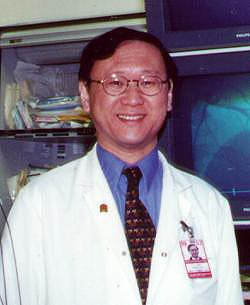
Dr. S. Chiu Wong, director of cardiac catheterization, led a Weill Cornell team investigating the use of radiation therapy techniques to reduce restenosis following angioplasty.
While it has become extremely commonplace to treat blocked coronary arteries with balloon angioplasty and the placement of a stent, the possibility of a renarrowing (restenosis) of an artery over time has remained a problem. One of the newest and most effective approaches to reduce, or prevent, this problem uses intravascular radiation therapy in conjunction with angioplasty.
"After the completion of clinical trials, the FDA has recently approved these new techniques, which have had very good results," said Dr. S. Chiu Wong, associate professor of medicine and director of cardiac catheterization, who led the Weill Cornell team that participated in the multi-institutional clinical trials of the new radiation therapy techniques. Dr. Wong was a co-author of an article reporting the results of clinical testing published in the New England Journal of Medicine (Jan. 25, 2001).
NewYork Weill Cornell is one of the few centers in the region offering the techniques—which have been shown to reduce the likelihood of restenosis by about 60 percent, a significantly better outcome compared with other approaches for preventing restenosis.

